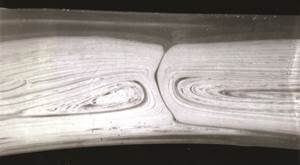More Hydraulic Presses Get Energy-Saving Servo Drives
Injection molders who want to save energy costs have a growing number of alternatives.
Injection molders who want to save energy costs have a growing number of alternatives. They could buy a more expensive all-electric machine. Or hybrid presses, in which some functions, such as the screw drive, are powered by electric servo motors, offer a way to capture much of the energy efficiency of all-electrics at lower cost—at least in high-speed applications. Now a third way (some call it a type of “hybrid”) is gaining momentum: A growing number of injection press builders are advocating use of servo motors to power hydraulic pumps, while aftermarket firms are offering to retrofit variable-speed drives onto existing hydraulic machines. Both are said to bring the energy efficiency of fully hydraulic machines very close to that of all-electrics at minimal upcharge over a standard hydraulic machine.
The latest news in this vein comes from Milacron LLC, Batavia, Ohio, which has just built its first U.S.-made Magna Toggle Servo machines. The original Magna Toggle was co-developed with Milacron’s Indian subsidiary, Ferromatik Milacron India, in 2005, and the servo version arrived in 2008. Milacron has been importing both versions from India since 2009. Milacron now offers toggle presses only with servo-driven pumps, and their popularity has outpaced the supply from India. That’s why Milacron is now building them here, in sizes from 125 to 400 tons (the full line extends down to 55 tons).
This past spring, Milacron announced the arrival of Maxima Servo two-platen machines with servo-driven hydraulic pumps in sizes from 310 to 950 tons. Standard Maxima models will remain available as long as the market demands them. Also, Milacron is just now extending the option of servo-driven pumps to include its larger Maxima two-platen models from 1100 to 4400 tons.
The new hydraulic options consist of an AC servo motor driving a fixed-volume gear pump. The variable-speed servo drives the pump to deliver just the amount of oil volume required at each stage of the process. The pump can simply stop if no additional flow is required, and it can even reverse direction to provide a rapid drop in pressure, if called for.
According to Milacron’s Brian Bish, product manager for hydraulic machines, and Mark Elsass, manager of applications and technical service, this pump/motor combination is the most efficient means yet available for hydraulic machines. It is said to be at least 40% to 60% more energy-efficient than standard hydraulics or variable-volume types—even what are confusingly called “servo pumps” (like Milacron’s P/Q pumps). Compared with variable-volume pumps, the gear pump is also low cost, simple, and rugged, with fewer moving parts.
Milacron says the Magna toggle machines cost only about 5% more than previous standard hydraulic toggles and come within 5% to 7% of the energy consumption of all-electrics at much lower cost. Magna toggles save additional energy by requiring less oil cooling and ejecting less heat into the plant. Keeping oil cooler also helps it last longer.
What’s more, the servo-motor/gear-pump combination is said to be about as quiet as an all-electric. And because the servo motor is highly dynamic and low in inertia, control and consistency reportedly are similar to all-electrics, contributing to faster start-ups than with conventional hydraulics. All told, Milacron sees servo-driven pumps extending the technological lifetime of hydraulics for molders who prefer that type of machine.
Related Content
Know Your Options in Injection Machine Nozzles
Improvements in nozzle design in recent years overcome some of the limitations of previous filter, mixing, and shut-off nozzles.
Read MoreWhat to Do About Weak Weld Lines
Weld or knit lines are perhaps the most common and difficult injection molding defect to eliminate.
Read MoreAre Your Sprue or Parts Sticking? Here Are Some Solutions
When a sprue or part sticks, the result of trying to unstick it is often more scratches or undercuts, making the problem worse and the fix more costly. Here’s how to set up a proper procedure for this sticky wicket.
Read MoreHow to Select the Right Tool Steel for Mold Cavities
With cavity steel or alloy selection there are many variables that can dictate the best option.
Read MoreRead Next
Why (and What) You Need to Dry
Other than polyolefins, almost every other polymer exhibits some level of polarity and therefore can absorb a certain amount of moisture from the atmosphere. Here’s a look at some of these materials, and what needs to be done to dry them.
Read MoreAdvanced Recycling: Beyond Pyrolysis
Consumer-product brand owners increasingly see advanced chemical recycling as a necessary complement to mechanical recycling if they are to meet ambitious goals for a circular economy in the next decade. Dozens of technology providers are developing new technologies to overcome the limitations of existing pyrolysis methods and to commercialize various alternative approaches to chemical recycling of plastics.
Read MoreLead the Conversation, Change the Conversation
Coverage of single-use plastics can be both misleading and demoralizing. Here are 10 tips for changing the perception of the plastics industry at your company and in your community.
Read More


























